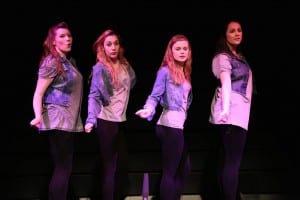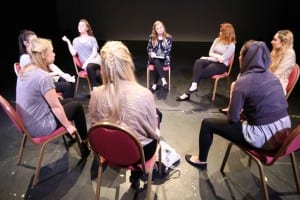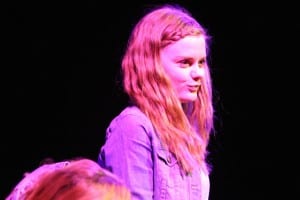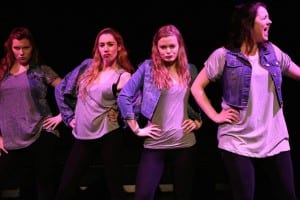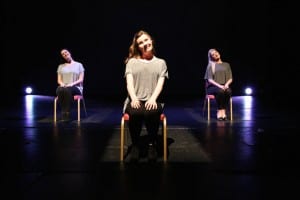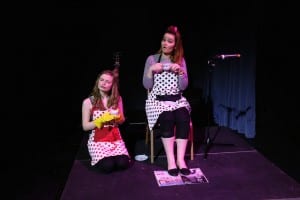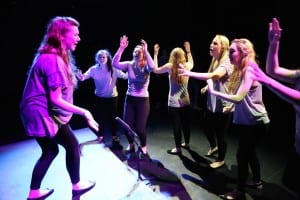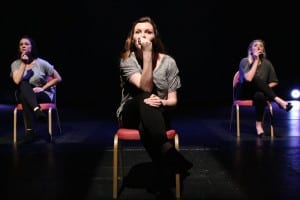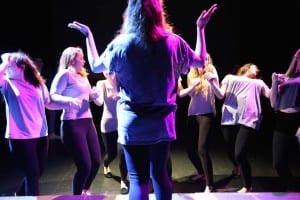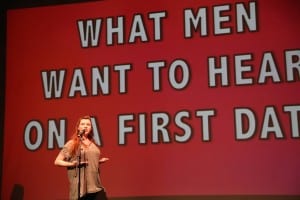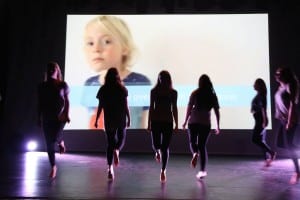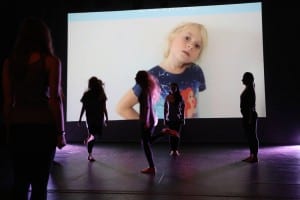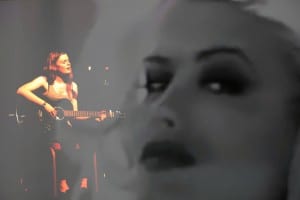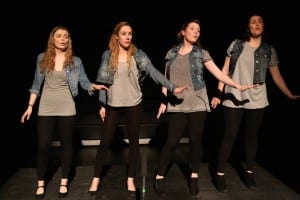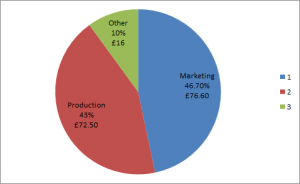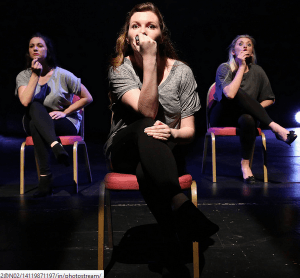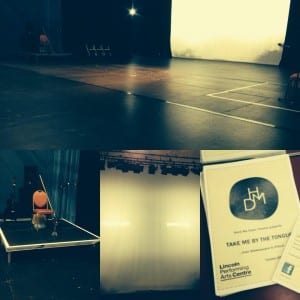‘Don’t panic. Everyone is learning. And you must learn too. Take copious notes. Notes about everything’ (Caird, 2010,246)
Show day proved to be successful and our Day Schedule was followed by all members of Hand Me Down Theatre and the Lincoln School of Performing Arts technical crew. Slight amendments had to be made throughout the day, however it was ensured by the production manager that this schedule had been contingency planned to cater for this.
(Photography by Phil Crow, May 2014)Technical cue to cue:
Our technical cue to cue was completed with all actors and the decision was made by our Stage Manager to ensure that all costumes and props were worn and all set elements and transitions were completed during this cue to cue. This made the cue to cue run for about 45 minutes but ensured that all members of the company were aware of their locations on stage and where each prop/costume/set element is being pre set/post set . Our Pre Show Check List was created so that our DSM, Libby Soper could be responsible of ensuring that they are pre set in the correct positions before each run. John Caird states that ‘you [PM/SM] must be careful that you keep control of it [technical rehearsal]’ (2010, 730). We felt like it would be easier for our company, as this show is promenade, for our Stage Manger (who would be calling the show, not DSM who would traditionally) would call the cue to cue from the stage. This ensured that all members of the production team were happy with the lighting choices, areas and fade times. The decision for our SM to be involved on stage during the technical cue to cue ensured that they could communicate well with all actors and use radio cans to communicate to the LSPA technical crew who were operating.
Your biggest problem is communication. Poor communication wastes a lot of time and causes frustration in all departments. Good communication saves time and keeps tempers, your own included, on an even keel. (Caird, 2010, 730)
(Photography by Phil Crow, May 2014)
Dress Rehearsal:
Our dress rehearsal ran at 14.30, half an hour after planned but this was due to a technical error beyond our company’s control. There were limited notes taken but notes that required a half an hour period with our technical crew afterwards. See Show Report Dress here for full notes. It was ensured that all members of Hand Me Down Theatre were aware of director notes alongside technical notes. All technical notes/errors were fixed by 16.00. ‘Don’t take too many actors’ notes at a dress rehearsal. A lot of the mistakes the actors make they will know they are making and will never make again’ (Caird, 2010, 246). The only technical note that was given to the actors after the dress run was to ensure that all members knew when they were ‘in’ their light so that they could be seen by all audience members. Our audience number for this run was 6.
(Photography by Phil Crow, May 2014)
Final Run:
The final show run began at 19.34 and ran for 55 minutes. See Show Report Show Run here for full technical and administrative information regarding this performance on 29th May 2014. Our audience number for this run was 99.
(Photography by Phil Crow, May 2014)
Get out:
Hand Me Down Theatre company were responsible for returning the theatre space back to proscenium arch staging and ensuring that all elements of set, costume, props and technical equipment were returned. Our Production Manager ensured that all members had specified jobs to do during this get out. See Get Out Check List here. This took us 28 minutes.
Work Cited:
Caird, J. (2010) Theatre Craft: A Director’s practical companion from A to Z. London: Faber and Faber limited.

